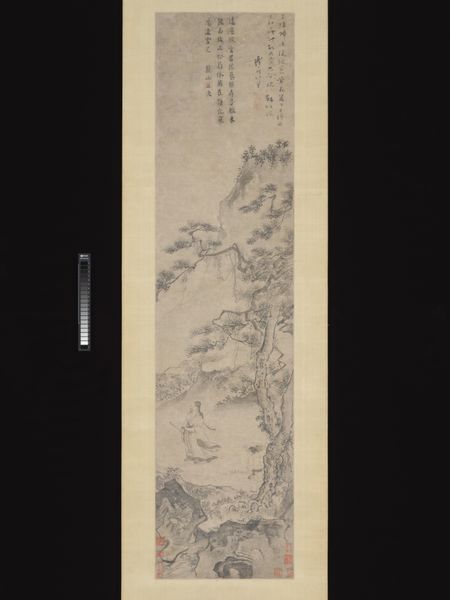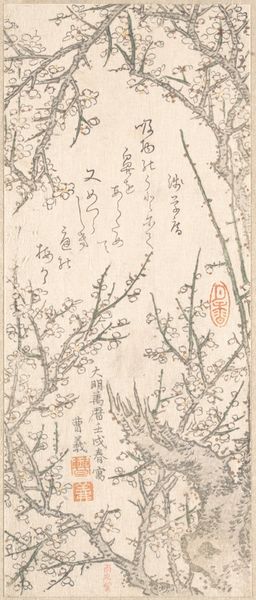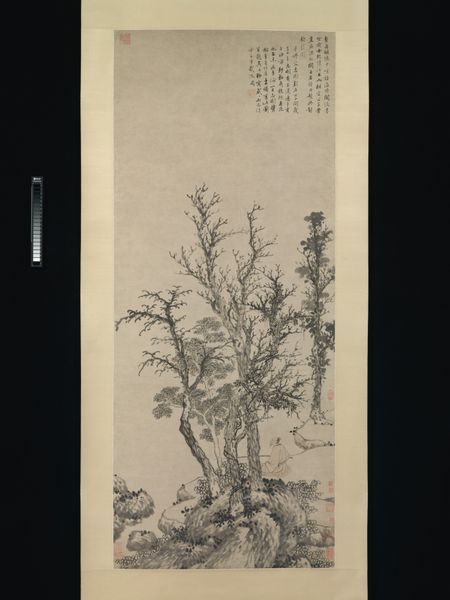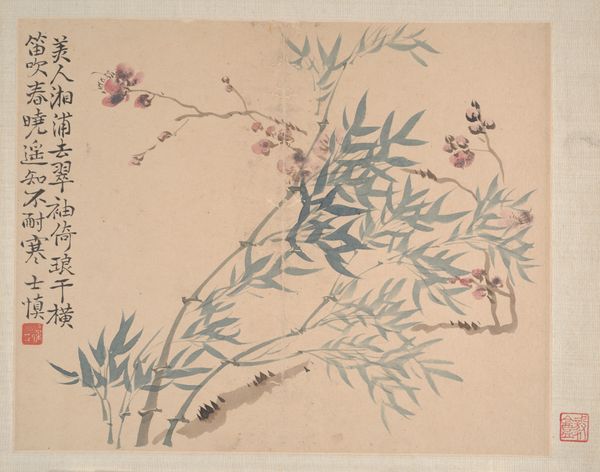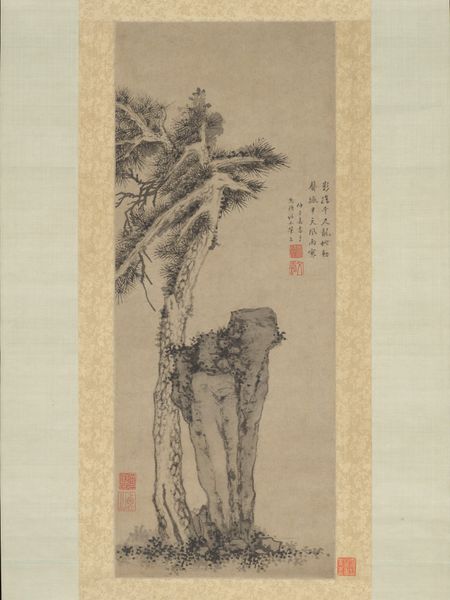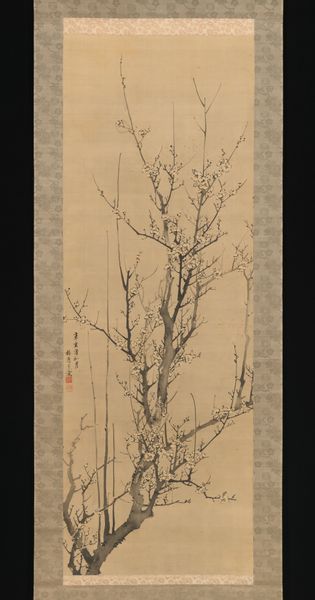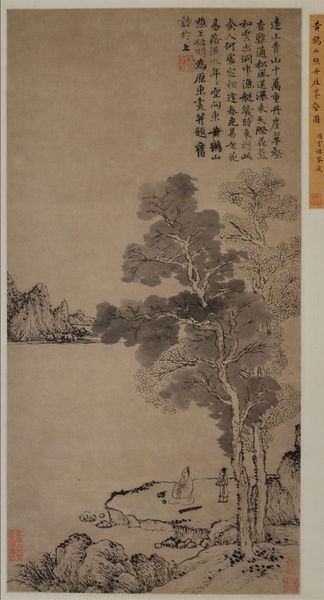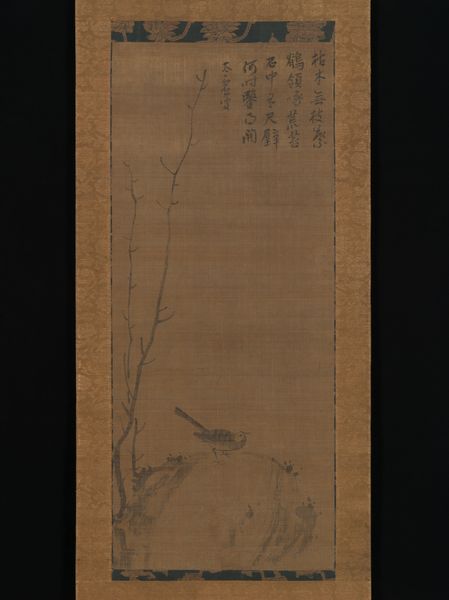
drawing, print, ink, woodblock-print
#
drawing
# print
#
asian-art
#
landscape
#
ukiyo-e
#
ink
#
woodblock-print
#
calligraphy
Dimensions: Image: 6 7/8 x 3 1/4 in. (17.5 x 8.3 cm)
Copyright: Public Domain
Editor: So, this is Kubo Shunman's "Old Plum Tree," a woodblock print from 1796. It feels so delicate, almost ephemeral. I'm struck by how the stark branches contrast with the smattering of delicate blossoms. How do you interpret the social context of this kind of imagery? Curator: That delicacy you're sensing is carefully cultivated. In Ukiyo-e prints like these, nature isn’t just nature; it's deeply intertwined with social status, artistic patronage, and popular culture. What do you notice about the calligraphy? Editor: Well, I see the calligraphy, but I can't read it. It is beautiful, though! Curator: The text functions in dialogue with the image; its presence demonstrates the importance of literacy, education, and aesthetic sensibility among the merchant classes who were its primary audience. Prints like this gained popularity among those outside the traditional elite. This increased demand transformed artistic production from being controlled by the elite to satisfying a larger public's desires and self-image. The poem usually references the picture. What would the integration of text and picture tell this society? Editor: That makes a lot of sense. So, the print wasn't just about pretty flowers. It was part of a broader shift in who got to participate in and appreciate art! I hadn't considered how much of a role social standing played in art reception back then. Curator: Precisely! By understanding the social circulation of these prints, we can recognize how art democratizes taste and creates cultural capital outside traditional hierarchies. The print becomes less about nature, and more about public consumption, wouldn't you agree? Editor: Absolutely. I see now that this image says less about plum trees and more about Japanese society. Thank you for opening my eyes. Curator: And thank you for posing such thoughtful questions. It's a good reminder of art's profound connections to our histories.
Comments
No comments
Be the first to comment and join the conversation on the ultimate creative platform.

